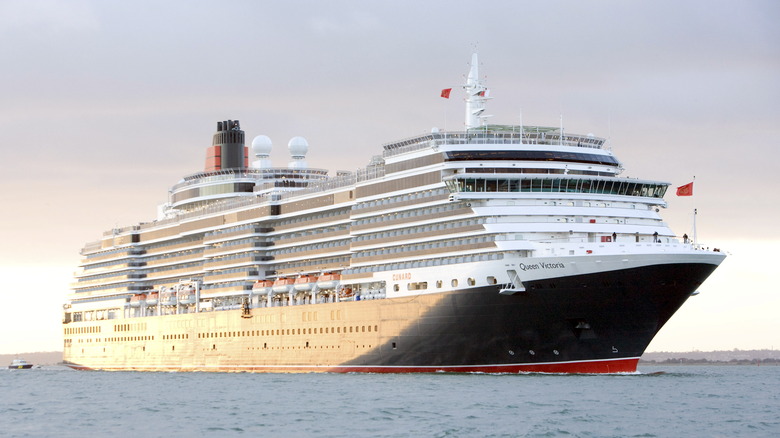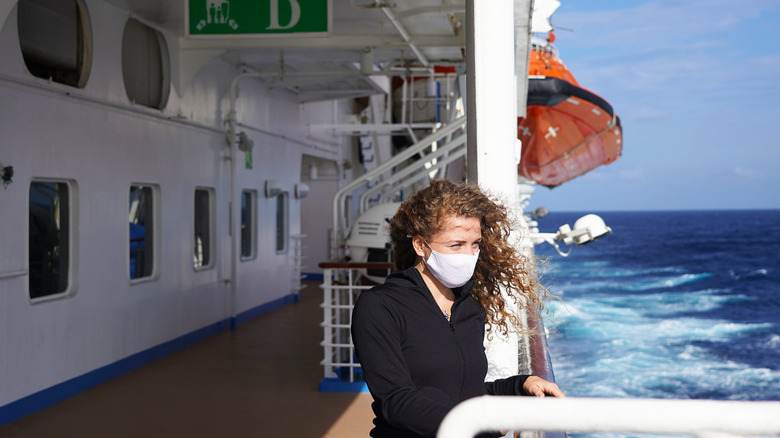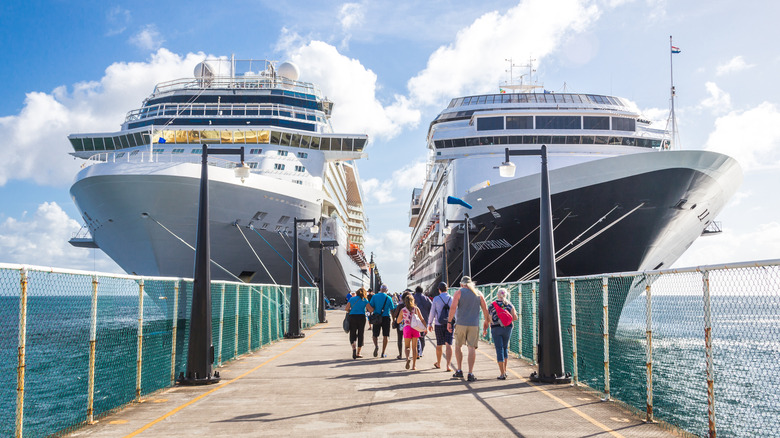Gruesome Details About The Mysterious Illness Taking Over Cruise Ship Queen Victoria
The last thing anyone boarding a long-anticipated cruise wants to experience is a mystery stomach bug during their getaway. Unfortunately, that's exactly what happened to dozens of people on the Queen Victoria, currently sailing the North American leg of a 107-night voyage. According to the Centers for Disease Control and Prevention (CDC), 123 passengers and 16 crew members have fallen ill since January 22, when the ship departed from Florida beach town Fort Lauderdale. The most common symptoms include diarrhea and vomiting, and the cause of the outbreak hasn't yet been determined.
Those who have gotten sick so far total nearly 7% of all passengers on board and nearly 2% of staff. Cunard, the cruise line responsible for the voyage, has quarantined those suffering from gastrointestinal symptoms. According to the CDC's update, Cunard is also ramping up its disinfection protocol in an attempt to get the mystery illness under control. A spokesperson for the cruise company shared with NBC News, "[Cunard] immediately activated their enhanced health and safety protocols to ensure the well-being of all guests and crew on board. Measures have been effective."
The latest in a string of cruise ship stomach bugs
The Queen Victoria outbreak is the second cruise-related sickness to be documented by the CDC since the start of the new year. The Celebrity Constellation, run by Celebrity Cruises, was also hit with a similar wave of digestive ailments in January, which turned out to be caused by norovirus. Celebrity Cruises' response was similar to Cunard's, though it added the additional step of collecting stool samples from ill passengers for testing.
Norovirus was at the center of several other cruise ship outbreaks last year too. In 2023, the CDC recorded 13 separate cases of the illness spreading on international voyages, with the largest taking place on the Ruby Princess during its February-March trip, when 318 people on board became sick (10% of passengers and 3% of crew members).
Whether on land or at sea, norovirus is a highly contagious illness that can be spread in multiple ways. Consuming food or water contaminated with the virus (such as ingredients prepared by someone already infected) is one common way of transmitting it. Norovirus can also spread through shared surfaces — such as those found all over packed cruise ships.
How to avoid getting sick on your next cruise
It's still unclear if norovirus could be to blame for the tummy troubles logged on Queen Victoria. Still, whether the culprit is that or another contagion, there are a few ways passengers — including you, on a future vacation — can avoid getting sick on a cruise. First, the CDC suggests washing your hands frequently, particularly after using the restroom and before touching your face or any food. The organization also says to follow general health-promoting habits, such as staying hydrated and well-rested (especially between alcoholic drinks at the bar and those late-night ship parties), to strengthen your immune system.
If you witness another passenger get sick, move to a different area to limit your exposure to any viruses that could be floating around. If you come down with any unusual symptoms, notify the on-board doctor or nurses as soon as possible. This can help the crew track and trace a potential outbreak and prevent others from falling ill.


